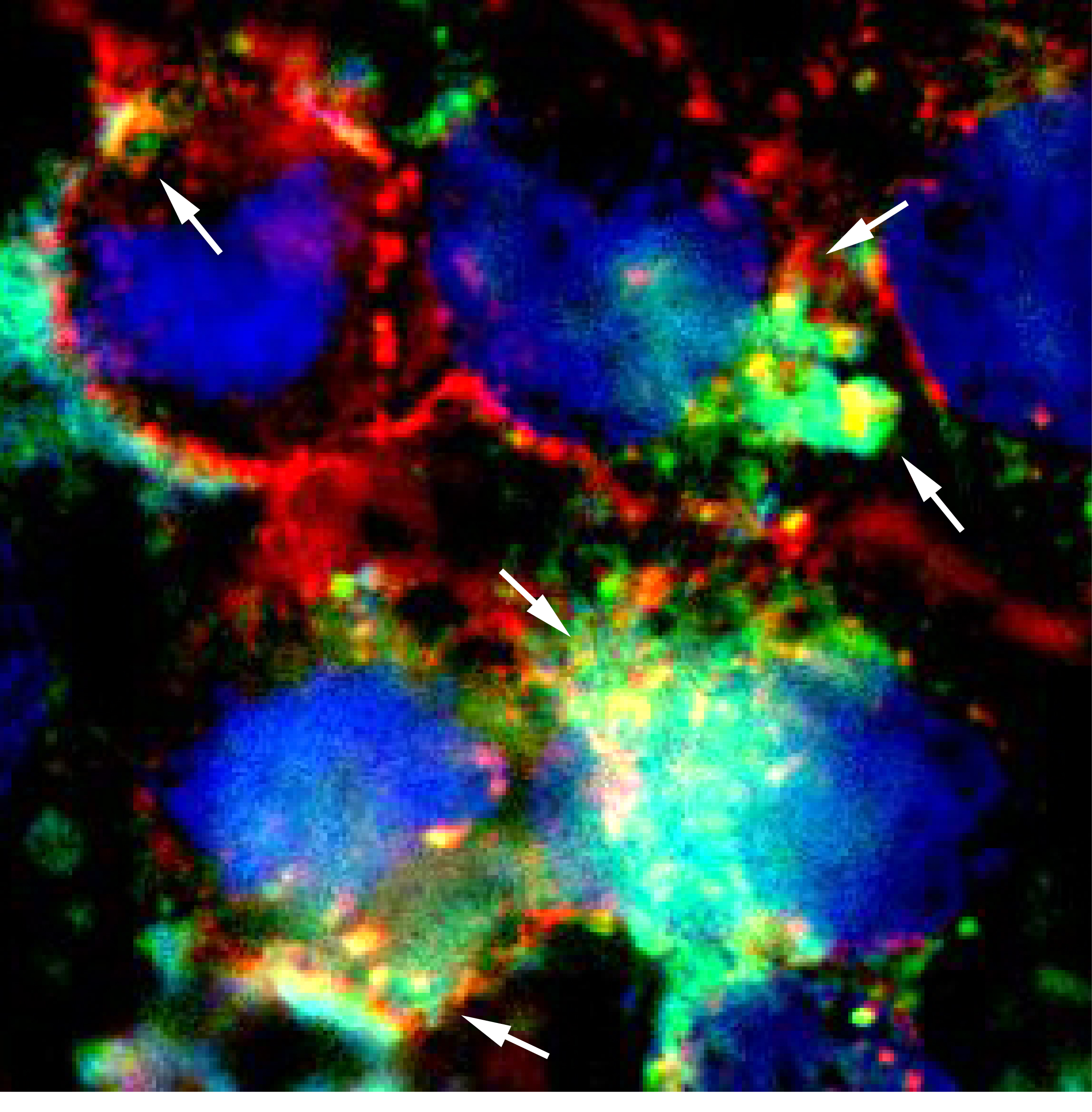A study from the lab of UNC Lineberger’s Dirk Dittmer, PhD, found that HIV sends out a protein called Nef in cellular packages called exosomes.


HIV may be able to affect cells it can’t directly infect by packaging a key protein within the host’s cellular mail and sending it out into the body, according to a new study out of a University of North Carolina Lineberger Comprehensive Cancer Center laboratory.
Researchers reported in the journal mBio that the virus uses secreted cellular packages called exosomes to send the viral protein Nef into the body. Researchers are planning to continue to investigate the role of the protein outside of infected immune cells, since they believe it’s being sent out for a purpose.
“This study establishes that an HIV protein called Nef circulates independently of the virus itself,” said UNC Lineberger’s Dirk Dittmer, PhD, professor in the UNC School of Medicine Department of Microbiology & Immunology. “This could explain how HIV affects cells that it cannot ordinarily infect, such as endothelial cells of the blood-brain barrier.”
HIV, or the human immunodeficiency virus, attacks a person’s immune system by infecting disease-fighting white blood cells called T-cells or macrophages. While other proteins are involved in the virus’ ability to infect these white blood cells and replicate, researchers say Nef plays a role in preventing reinfection of the same white blood cell by two different HIV viruses, and in preventing recognition of the virus by the immune system.
The protein has also been shown to play a role in the disease’s progression to AIDS, the late stage of HIV infection in which destruction of the immune system allows opportunistic diseases and cancers to overwhelm the host. Researchers believe Nef’s transfer by exosomes could be a mechanism by which the virus accelerates AIDS progression.
“For many years, the role of Nef has been studied in the context of infected cells,” said Ryan P. McNamara, PhD, the study’s first author and a postdoctoral research associate at UNC Lineberger. “What we identified is that the protein is being secreted from infected cells without the viral genetic material. This points toward a role for the protein outside of the cell. We believe it’s being trafficked outside the cell for a purpose.”
Dittmer, who is co-director of UNC Lineberger’s global oncology and virology programs, said that based on the finding, researchers also believe Nef could be used as a biomarker. Finding high levels of Nef-containing exosomes in a blood sample, or “liquid biopsy,” could be an indication of the start of clinical AIDS, or long-term complications of HIV infection.
“Exosomes in general are of interest in cancer and many diseases beyond HIV infection,” Dittmer said. “We will continue our methods to understand their fundamental biology, how it is changed by diseases and how this new molecular entity can be used as a minimally invasive biomarker or liquid biopsy.”
In addition to Dittmer and McNamara, other authors are Lindsey M. Constantini, PhD, postdoctoral scholar at the UNC School of Medicine Department of Microbiology and Immunology and UNC Lineberger; T. Alix Myers, PhD, of Tulane University; Blake Schouest of Tulane; Nicholas J. Maness of Tulane; Jack D. Griffith, PhD, UNC Lineberger member and professor in the UNC School of Medicine School of Microbiology and Immunology; Blossom A. Damania, PhD, UNC Lineberger member, vice dean for research in the UNC School of Medicine and Cary C. Boshamer Distinguished Professor of Microbiology and Immunology; and Andrew G. MacLean, PhD, of Tulane.
The study was supported by grants from the National Institutes of Health.
